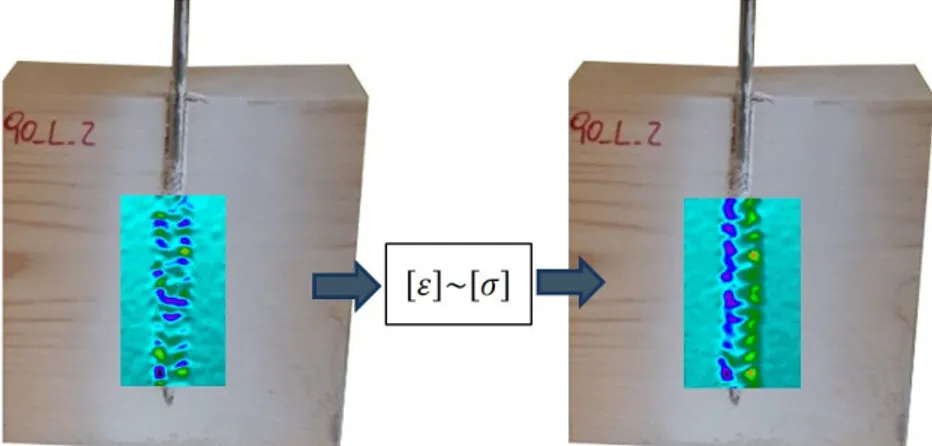ISBN: 978-91-88898-64-7
23
Close-up strain measurement along the mechanical interface of self-tapping screws
joined with timber by means of electronic speckle pattern interferometry
Cedou Kumpenza†*, Andreas Ringhofer+, Thomas Krenke‡, and Ulrich Müller††University of Natural Resources and Life Sciences Vienna (BOKU), Austria, cedou.kumpenza@boku.ac.at
+Graz University of Technology, Graz, Austria, andreas.ringhofer@tugraz.at ‡Wood K plus, Linz, Austria, t.krenke@kplus-wood.at
Inserting self-tapping screws in timber is done for example to reinforce wood material, in order to guarantee the required mechanical strength of this common timber engineering application. In favor, to understand the interface behavior of the “timber-screw” system, it is of main importance to describe the stress-strain distribution in the vicinity of the screw. However, only few researchers have dealt so far with the investigation of the stress-strain distribution at the screw – wood interphase that relies on non-contact optical gauging techniques [1, 2] like for example electronic speckle pattern interferometry (ESPI). Therefore, in the present study the in-plane strain distribution around the joint area “timber-screw” was measured by means of ESPI. In the experiments solid spruce wood (Picea abies (L.) Karst.) and self-tapping screws with a slenderness of ≈ 11 (lef/d) were used. Timber elements were cut into two pieces, clamped together and the screws were inserted in the cut surface. Before performing screw pull-out tests, one timber piece was removed, so that the interphase section “timber-screw” was observed directly. Based on the idealization of wood as orthotropic material with linear-elastic material properties, Hooke’s law was applied to estimate the related in-plane stresses. The established maps implied where stress-strain concentrations can be expected, and further what timber material region is strained and stressed (cf. Fig. 1). Providing fundamental insight for future screw-joints developments and material simulation, is the aim of this investigation.
Figure 1: Illustration of strain (left) and stress map (right) of a tested specimen
Applying ESPI technique on the designed pull-out experiment, proved that full-field non-contact optical gauging techniques are suitable to establish stress-strain maps of a highly heterogenous, combined material region accurately [3]. Nevertheless, for more profound understanding and validation of the strain-stress behavior along the interface section of the “timber-screw” specimens finite-element modeling (FEM) is suggested. The aim of this investigation, however, which was generating basic knowledge considering the stress-strain mechanism between screw and timber has been fulfilled.
References
[1] P. Ellingsbø, KA. Malo: Withdrawal capacity of long self-tapping screws parallel to grain direction. In: 2012 world conference on timber engineering, 2012, 228-237.
[2] M. Ayoubi, M. Trautz: Determination of the Stress Distribution in Timber Elements Reinforced with Self-Tapping Screws Using an Optical Metrology System. Advanced Materials Research, 778 (2013), 432-439.
[3] C. Kumpenza, A. Ringhofer, T. Krenke, U. Müller: Joining timber with self-tapping screws: experimental investigation of the stress-strain distribution along the mechanical interface section using electronic speckle pattern interferometry. Submitted and Under Review.
Acknowledgements: this research was conducted within the project “WoodC.A.R: Wood – Computer Aided Research” which received funding by the Austrian Research Promotion Agency (Österreichische Forschungsförderungsgesellschaft, FFG) under the Project Number 861.421.
